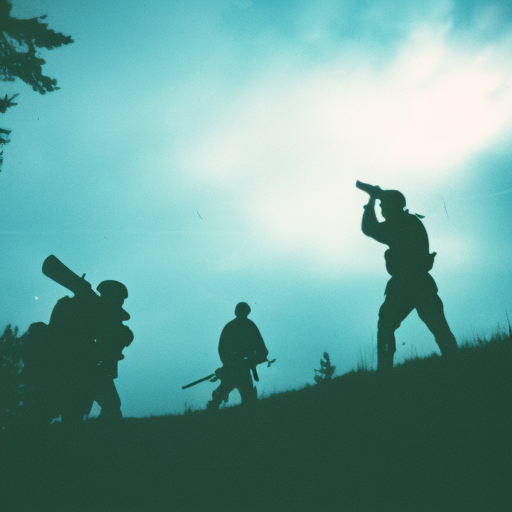Battle of the Wilderness: A Fierce and Bloody Clash
The Battle of the Wilderness was a significant engagement that took place during the American Civil War from May 5 to May 7, 1864. It marked the beginning of Lieutenant General Ulysses S. Grant’s Overland Campaign against General Robert E. Lee and the Confederate Army of Northern Virginia. The battle was fought in the dense and tangled forest known as the Wilderness, located in Spotsylvania County, Virginia.
Background:
After assuming command of all Union armies, Grant devised a strategy to engage Lee’s forces and bring an end to the war. His plan involved launching simultaneous offensives against Confederate armies in different theaters. Grant personally led the Army of the Potomac, aiming to defeat Lee’s army and capture the Confederate capital of Richmond.
The Battle:
On May 4, 1864, Grant’s forces crossed the Rapidan River and entered the Wilderness. Lee, aware of Grant’s intentions, positioned his army to block the Union advance. The Wilderness was a challenging terrain for traditional warfare, with thick underbrush and limited visibility. As the battle commenced, the dense forest hindered movements and disrupted communication, leading to confusion and disarray on both sides.
The fighting in the Wilderness was characterized by intense and close-quarter combat. The soldiers struggled to maintain formation and often found themselves engaged in brutal hand-to-hand combat. The dense vegetation also made it difficult to maneuver artillery, limiting its effectiveness. The battle was marked by heavy casualties on both sides, with the Union suffering around 17,000 casualties and the Confederates around 11,000.
Significance:
Although the battle ended inconclusively, it had significant implications for the rest of the war. Grant, unlike previous Union commanders, refused to retreat after the initial setbacks. Instead, he ordered his army to continue southward towards Richmond, signaling a change in Union strategy. This determination to press forward, despite heavy losses, set the stage for the relentless and aggressive style of warfare that would characterize the remainder of the Overland Campaign.
The Battle of the Wilderness also highlighted the resilience and fighting prowess of Lee’s army. Despite being outnumbered, Lee skillfully utilized the difficult terrain to his advantage, inflicting heavy casualties on the Union forces. The battle demonstrated that defeating the Confederate army would not be an easy task for Grant and the Union.
Aftermath:
Following the Battle of the Wilderness, Grant continued his advance towards Richmond, engaging in a series of bloody battles with Lee’s army. The Overland Campaign would ultimately culminate in the Siege of Petersburg, where the Union army laid siege to the Confederate stronghold for nearly ten months.
The Battle of the Wilderness was a brutal and costly engagement that set the stage for the rest of the Overland Campaign. It showcased the determination of both Grant and Lee, as well as the challenges of fighting in difficult terrain. The battle’s inconclusive outcome foreshadowed the long and bloody struggle that lay ahead for both sides in the American Civil War.












